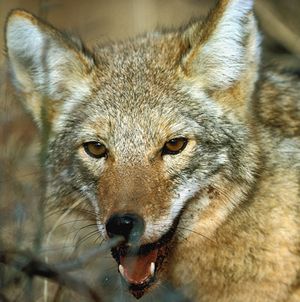For managing coyote damage, a variety of control methods must be available since no single method is effective in every situation. Success usually involves an integrated approach, combining good husbandry practices with effective control methods for short periods of time.
Regardless of the means used to stop damage, the focus should be on damage prevention and control rather than elimination of coyotes. It is neither wise nor practical to kill all coyotes. It is important to try to prevent coyotes from killing calves or sheep for the first time. Once a coyote has killed livestock, it will probably continue to do so if given the opportunity.
Equally important is taking action as quickly as possible to stop coyotes from killing after they start. Continue reading Controlling Coyotes and Preventing Damage
